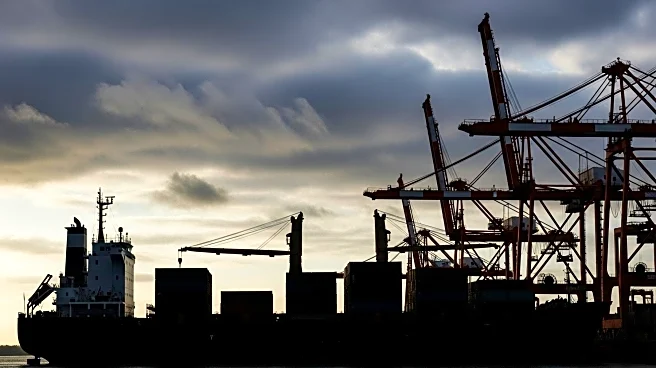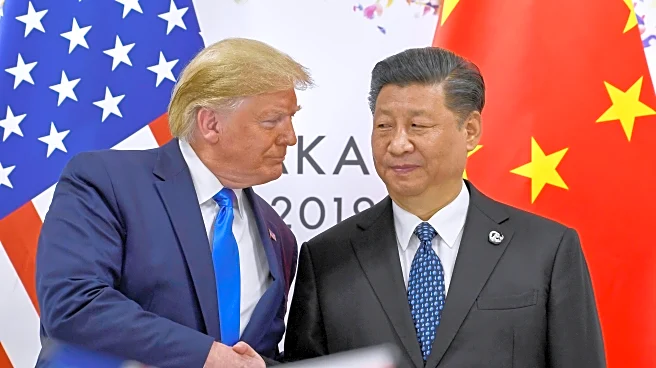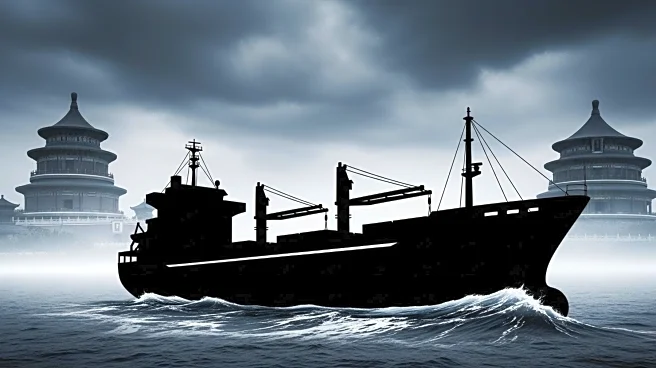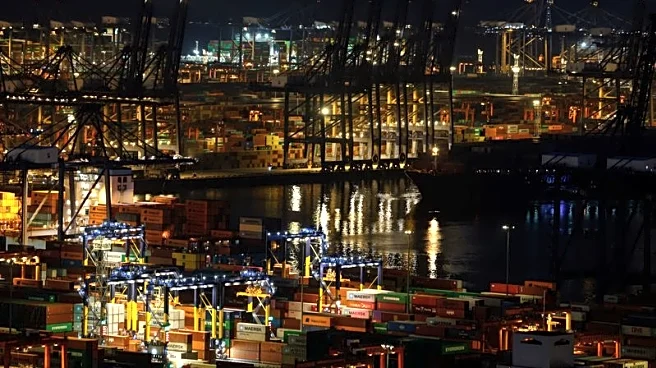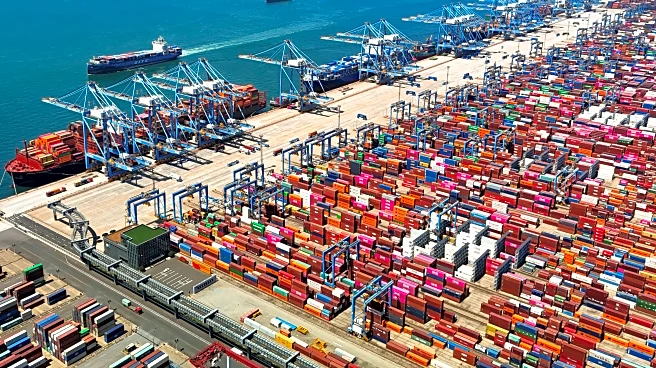What's Happening?
China has announced new port fees for vessels owned or operated by U.S. entities, effective from October 14. This move is a countermeasure against upcoming U.S. port fees on Chinese ships, as part of the ongoing trade tensions between the two nations. The Chinese transport ministry stated that U.S. vessels will be charged additional fees per voyage, with rates set to increase over the next three years. The initial fee is 400 yuan ($56.13) per net tonne, rising to 640 yuan ($89.81) in April 2026, and 880 yuan ($123.52) in April 2027. By April 2028, the charge will reach 1,120 yuan ($157.16) per net tonne. The U.S. fees on China-linked vessels are part of a broader effort to revive domestic shipbuilding and counter China's naval and commercial shipping power.
Why It's Important?
The imposition of additional port fees by China is significant as it adds complexity and cost to global trade networks, potentially affecting exporters, producers, and consumers. The move is seen as a retaliatory measure in the ongoing trade war, which has already impacted U.S. agricultural and energy exports to China. The fees could further strain the relationship between the two countries, complicating efforts to resolve trade disputes. The U.S. aims to bolster its shipbuilding industry, which lags behind China's, as Chinese shipyards have built over 1,000 commercial vessels last year compared to fewer than 10 by the U.S. This development could influence global supply chain stability and international economic order.
What's Next?
The escalating trade tensions may lead to further diplomatic engagements between the U.S. and China. President Trump and Chinese leader Xi Jinping are expected to meet at the Asia-Pacific Economic Cooperation (APEC) meetings in South Korea later this month, which could provide a platform for discussions on resolving trade issues. The ongoing fees and tariffs could prompt both nations to seek new trade agreements or adjustments to existing policies to mitigate economic impacts. Stakeholders in the shipping and trade industries will likely monitor these developments closely, as they could affect global trade dynamics and economic growth.
Beyond the Headlines
The introduction of port fees by China highlights the broader geopolitical struggle between the U.S. and China, particularly in maritime and trade dominance. The fees are not just economic measures but also reflect strategic positioning in global trade routes and supply chains. The long-term implications could include shifts in trade alliances and increased efforts by the U.S. to enhance its shipbuilding capabilities. Additionally, the fees underscore the challenges in achieving a stable international trade environment amidst rising protectionism and national interests.


